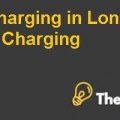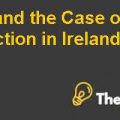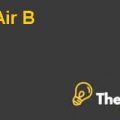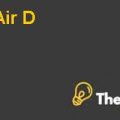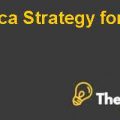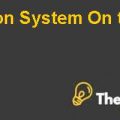by Myra M. Hart, Michael J. Roberts, Julia D. Stevens Source: HBS Premier Case Collection 20 pages. Publication Date: January 13, 2003. Prod. #: 803096-PDF-ENG
1. Overall validity of business:
Team: Founders are qualified, skilled and energetic. Full time devotion of “Chase”, using her entrepreneur skills, contributes a lot towards the startup phase and exploring the future potential. The startup business made a mistake of hiring a costly executive but soon rectified it as it has to be economical and extremely disciplined in its initial phases.
Opportunity: The business can be evaluated from the projections, based on revised financial plan (please refer excel file). The business potential has been calculated to bring, a net income of $3.25 Million in five years from Boston operations (from revenue of $6.27M) representing a 52% Net Margin i.e. an average net income of $0.65Million per year. As Boston is the 8th largest city in US as per population/household, if the business is also assumed to be operative simultaneously in 7 other cities, to gauge the business’ potential, then the combined net income reaches above $26 Million in five years (from revenue of $50M) i.e. an average net income of $5.2Million per year. This reflects the hidden potential.
Context: The idea has proved itself in the already established European markets and seems lucrative in the untapped market of Boston with potential for nationwide growth, in US.
Deal: With the benefits of environment protection and avoiding high parking and fixed costs of car ownership, the deal attracts customers with limited driving requirements. When compared with the alternatives (please refer excel file) of owning a car ($6.9k/year) and the available car rental services ($1.9k-2.4k/year), the offer from Zipcar ($1k-1.5k/year) makes sense and appeals those specific users, who require less than 6,000 miles driving per year.
2. Revision of the financial plan:
Reason for revision: The initial annual fee of $300 (plan Dec-99) was found to be high so it was revised to $75 in May-00 with an increased tiered pricing, changing the hourly rate from $1.5/hr to $4.5-$7/hr, with the cap of $44/day. Boston’s attrition rate, parking, lease and equipment costs were initially estimated on a lower side, which were increased in new plan. These changes in prices also increased no. of new members, thus revising the plan.
Breakeven Point: Please refer excel file. As per the previous plan (Dec-99), to achieve the breakeven point (no profit no loss), company needed 15 cars on average or 275 av. members (15:275) in year1 and then 19:347(year2), 21:385 (year3-4) and 22:391 (year5). Due to the above revisions, the requirements for breakeven point decreased, showing a positive sign. New requirement for breakeven were 9 average cars or 158 av. members in year1 and then 11 cars in year 2 and 12 in year 3 to 5, while 196, 215, 216 and 219 av. members in year 2 to 5.
3. Results from real operation:
Please refer excel file for comparing variance of actual results from expected results. Upon considering the results of September, it was identified that there is approx 50%-60% use of service in nights and weekends, therefore car availability at these times should be ensured for profitable results. Two major negative impacts include (A) Overheads for Corporate and Boston office have increased substantially by 186% & 205% respectively. (B) Actual no. of trips per month (per member) is found to be 1.4 trips per month while the estimates of May plan represent 4 trips per month per member. Mostly beneficial variances are identified. Important positive variances include (A) For daily trips, 94 miles used, instead of expected 125 miles, and 16 hours used instead of expected 24 hours (it is assumed that billing for daily trips is fixed for 125 miles/24 hours thus saving 31 miles and 8 hours) (B) Hourly use is expected to be 4 hrs per trip however actual results show that 6.2 hrs per trip are used. As hourly charge is variable, thus increased hours reflect increased earnings, while daily charges are fixed, thus decreased miles reflect savings. Thus business is in overall positive direction.


